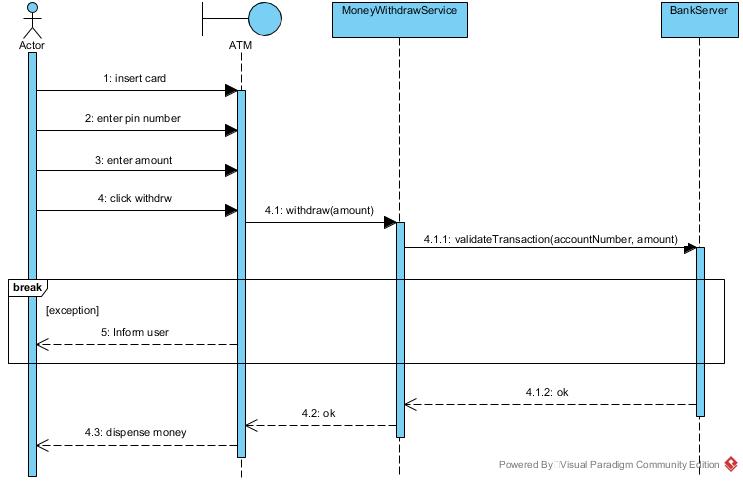
- #Api sequence diagram example how to#
- #Api sequence diagram example manual#
- #Api sequence diagram example registration#
- #Api sequence diagram example software#
Place the condition for exiting the loop at the bottom left corner in square brackets. For example, which container image to use, which ports to expose, and how many pod replicas. You define pods, replica sets, and services that you want Kubernetes to maintain. These are the commands you provide to Kubernetes. When that object's lifeline ends, you can place an X at the end of its lifeline to denote a destruction occurrence.Ī repetition or loop within a sequence diagram is depicted as a rectangle. The Kubernetes Master (Master Node) receives input from a CLI (Command-Line Interface) or UI (User Interface) via an API. Objects can be terminated early using an arrow labeled ">" that points to an X. Lifelines are vertical dashed lines that indicate the object's presence over time. Asynchronous messages are sent from an object that will not wait for a response from the receiver before continuing its tasks. Use half-arrowed lines to represent asynchronous messages. Messages are arrows that represent communication between objects. When an object is busy executing a process or waiting for a reply message, use a thin gray rectangle placed vertically on its lifeline.
#Api sequence diagram example registration#
I also wanted to show what would happen if the information entered by the user in the registration page are. So I was doing the diagram for Account Creation as follows: So, first the user goes to the registration page and then enters his information.
#Api sequence diagram example how to#
On this page, you can access some of the top templates and sample diagrams available in Visio, or request ones that you want. This appendix contains sequence diagrams showing the relationship between the API service. Sequence Diagram Tutorial Complete Guide with Examples Updated on: 12 December 2022 13 min read This sequence diagram tutorial is to help you understand sequence diagrams better to explain everything you need to know, from how to draw a sequence diagram to the common mistakes you should avoid when drawing one. I am doing sequence diagrams, but I have some issues in the design of these diagrams. Use the UML object symbol to illustrate class roles, but don't list object attributes.Īctivation boxes represent the time an object needs to complete a task. Visio is a diagraming tool that makes it easy and intuitive to create flowcharts, diagrams, org charts, floor plans, engineering designs, and more by using modern templates with the familiar Office experience. Click on the diagram to create a REST Resource and name it Members. Select REST Resource in the diagram toolbar. Enter Membership Registration API Design as diagram name. In the New Diagram window, select Class Diagram and click Next. What you are seeing isn't what you think it is.Class roles describe the way an object will behave in context. To create a Class Diagram, select Diagram > New from the toolbar.


In fact, it even understands Graphviz syntax! (2)īecause of all of this, "intuitive" doesn't happen until you have some basic knowledge of PlantUML. Implementation designs of each new feature I’m working on are loaded with Sequence diagrams. For example, the actor could request to log. The most used by me (and my favorite) UML diagram is Sequence Diagram.

#Api sequence diagram example software#
(1)īesides various UML diagrams (like the sequence diagram you encounered), PlantUML has support for various other Software development related formats (such as archimate, Block diagram, bpmn, c4, Computer network diagrams, erd, gantt chart, Mind maps, and wbd), as well as visualization of json and yaml files. Messages will often appear at the top or bottom of a system sequence diagram to illustrate the action in detail.

#Api sequence diagram example manual#
I see you have fallen for the classical trap of "The first page of the manual is not representative of the tool". A rule of thumb is to keep the same level of abstraction in the whole diagram - suddenly diving into implementational details can clutter it very quickly.


 0 kommentar(er)
0 kommentar(er)
